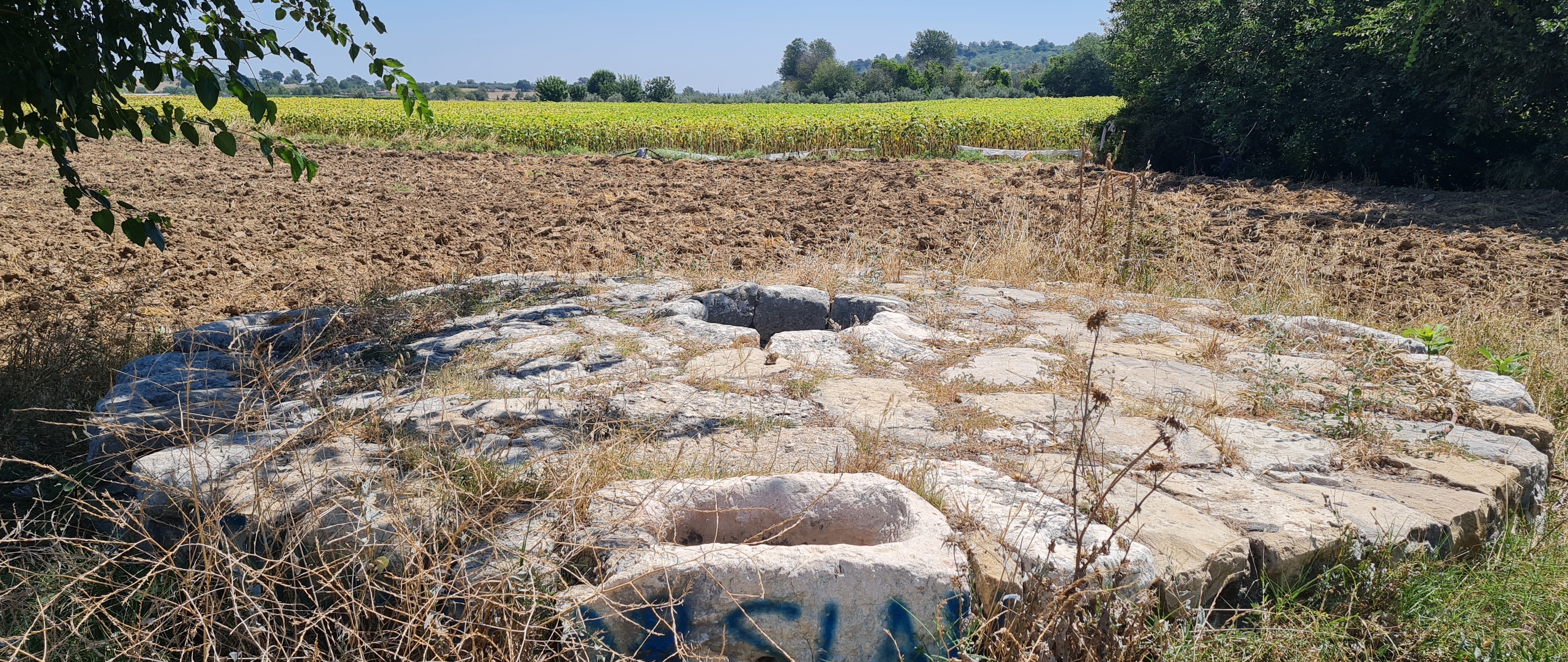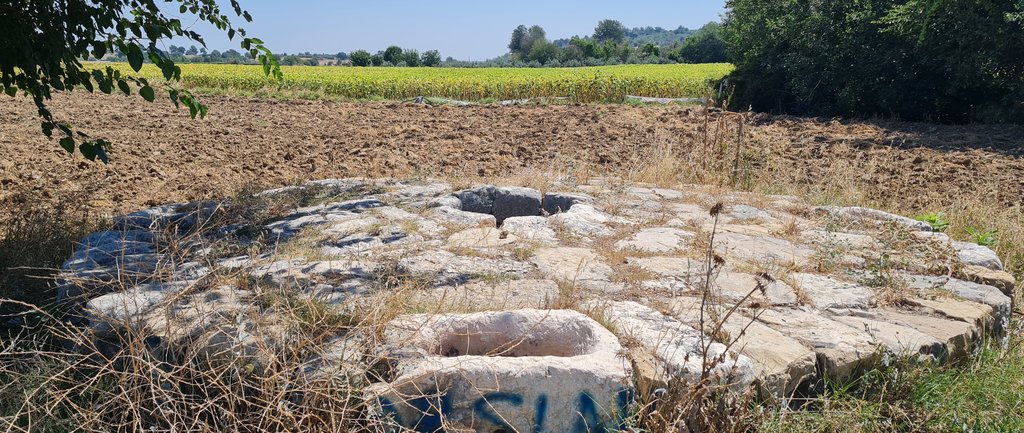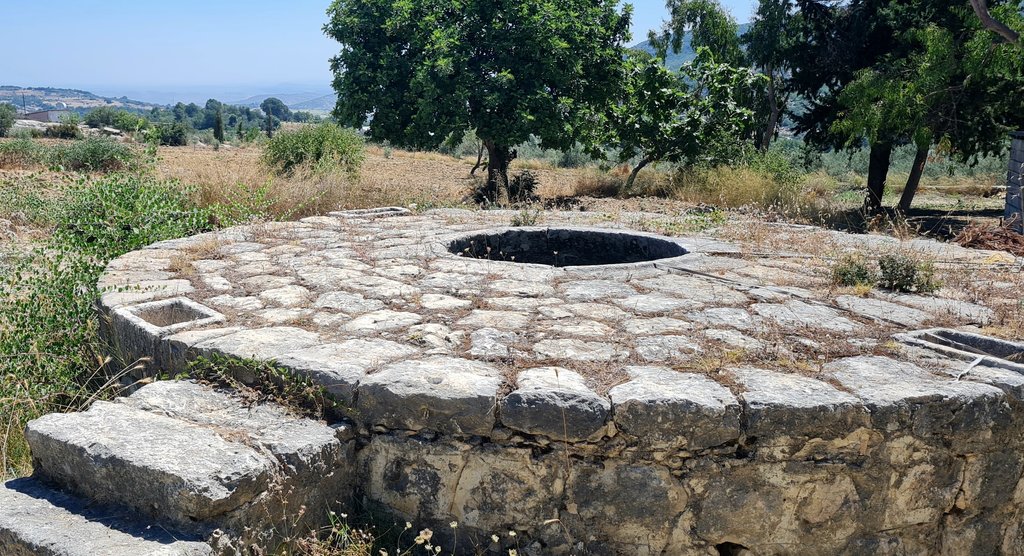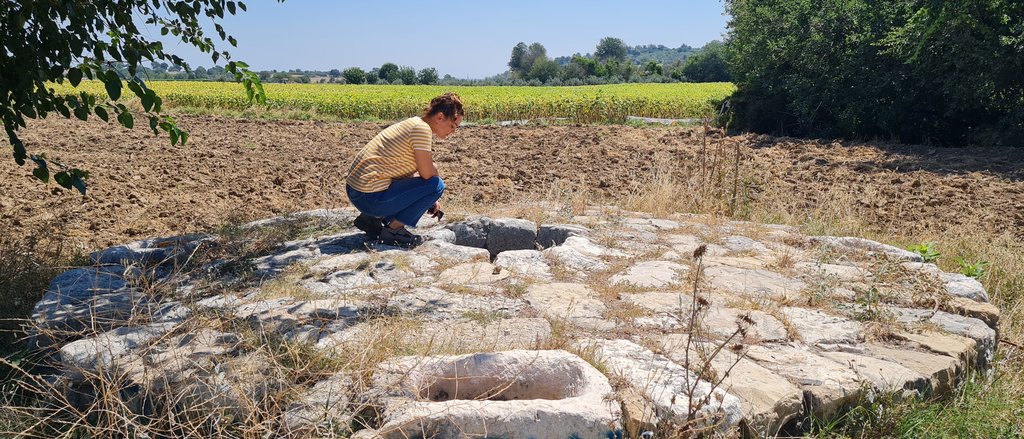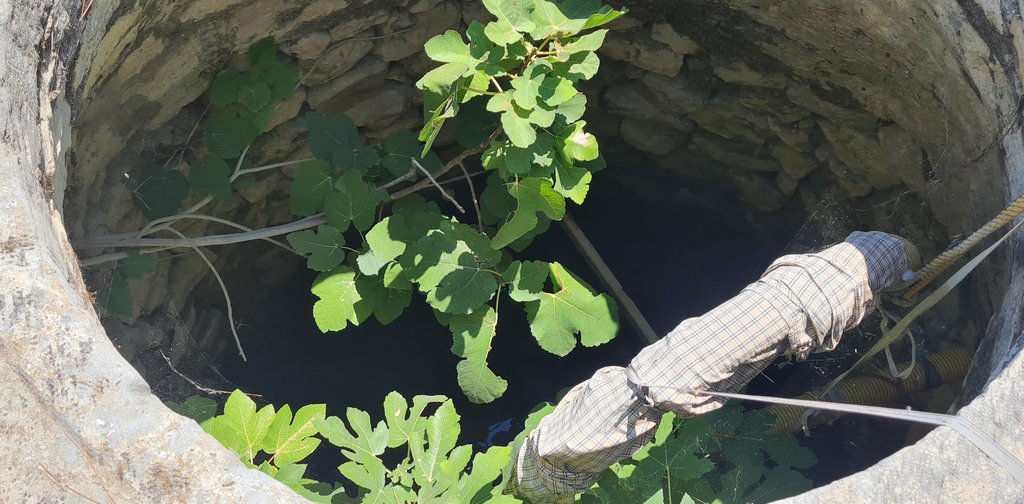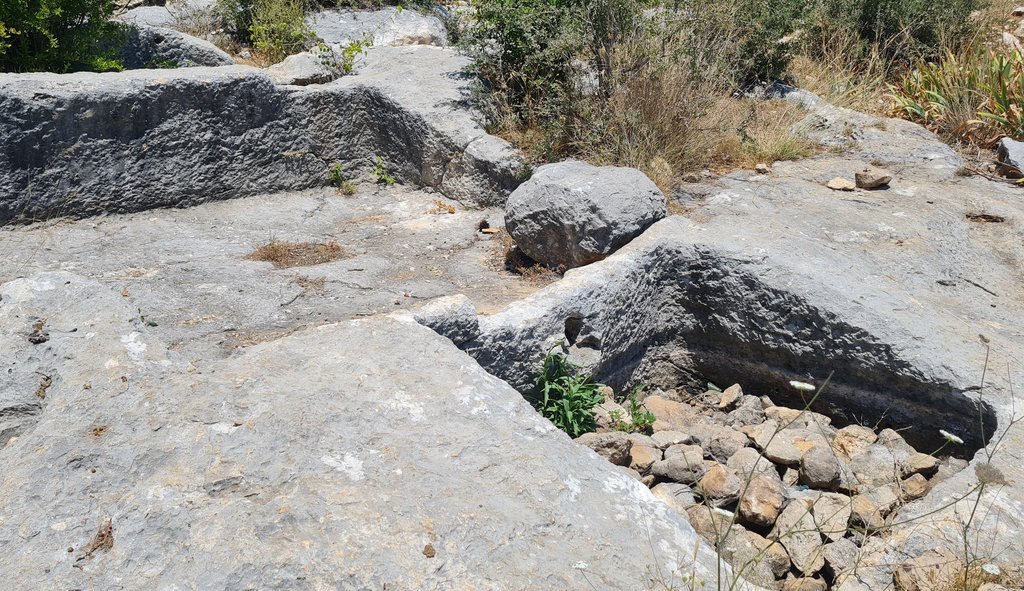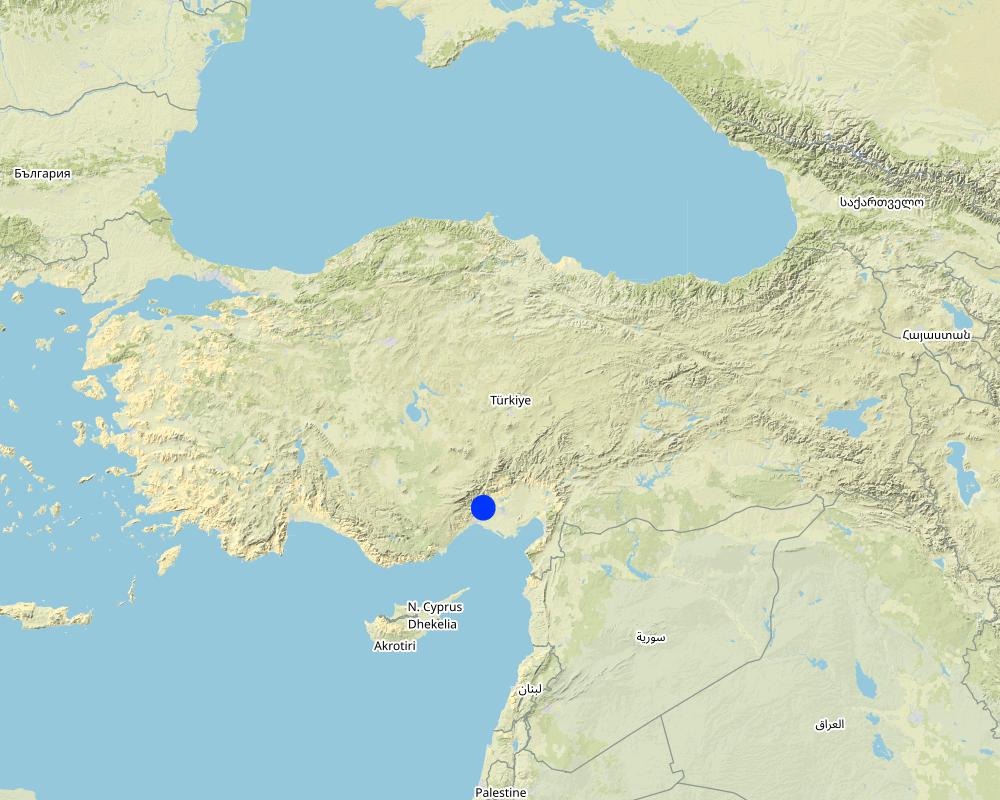Traditional Cisterns [土耳其]
- 创建:
- 更新:
- 编制者: Erhan Akca
- 编辑者: –
- 审查者: William Critchley, Rima Mekdaschi Studer
Sarnıç
technologies_6397 - 土耳其
查看章节
全部展开 全部收起1. 一般信息
1.2 参与该技术评估和文件编制的资源人员和机构的联系方式
关键资源人
Mayor:
Bozdogan Haluk
Municipality of Tarsus
土耳其
co-compiler:
Polat Osman
Municipality of Tarsus
土耳其
SLM专业人员:
有助于对技术进行记录/评估的机构名称(如相关)
Municipality of Tarsus (Municipality of Tarsus) - 土耳其1.3 关于使用通过WOCAT记录的数据的条件
编制者和关键资源人员接受有关使用通过WOCAT记录数据的条件。:
是
1.4 所述技术的可持续性声明
这里所描述的技术在土地退化方面是否存在问题,导致无法被认为是一种可持续的土地管理技术?:
否
2. SLM技术的说明
2.1 技术简介
技术定义:
Cisterns are water collection structures which form part of a cultural heritage dating back some 2000 years. While cisterns are commonly used to store drinking water, in the sloping fields of Tarsus they serve as a form of water insurance structure for orchards during dry periods.
2.2 技术的详细说明
说明:
People have lived in Tarsus in the Northern Mediterranean Basin since the Neolithic period, and from that time they have modified their environment by constructing terraces to safeguard against erosion and cisterns to store water. Cisterns were constructed for two purposes: cisterns next to homes were designed for drinking water, and the cisterns in the fields were intended to supply vital supplementary irrigation to Mediterranean crops of figs, carobs, vines, and olives during the driest months of July and August. In the summer, a normal-sized cistern with a water volume of 150 cubic metres (150 tonnes) can supply water to a 1-hectare fig (150 tree.ha-1) or olive orchard (200 tree.ha-1) that are traditionally planted on a slightly inclined field (3-5% slope).
The historical field cisterns, which were built using roman cement to reinforce locally available hard limestone, have an average depth of 14 metres and a maximum diameter of 4 metres, narrowing towards the top like the neck of a bottle. One of the most important features is the design that keeps the water surface at about 2-3 meters below the intake hole. By making sure the water in the reservoirs does not receive sunlight, it is believed that the growth of algae and bacteria would be prevented in the cistern.
The Mediterranean climate forms a home for drought-tolerant crops like figs, grapes, olives and carob. However, by supplying small amounts of water to plants, such as one or two buckets, throughout the driest months of the year, particularly July and August, yields can be significantly increased. Cisterns are also utilized to provide sheep and goats, which have been farmed in the region for a very long time, with water for drinking.
Maintenance is needed to repair structural damage, which can be brought about by shifting stones or weakening of the cement. Additionally, the interior has to be cleaned because it may have been partially filled with stones and branches. Furthermore, certain plants must not be permitted to grow close to the cisterns, particularly figs, as their roots can penetrate the stone and undermine the framework.
Farmers continue to favor the technique since the frequency of droughts in the Mediterranean area is increasing. However, because the maintenance of the cisterns exceeds farmers' capabilities, they request, and receive, repair and cleaning assistance from the municipality.
2.3 技术照片
2.5 已应用该技术的、本评估所涵盖的国家/地区/地点
国家:
土耳其
区域/州/省:
Mediterranean Region, Turkey
有关地点的进一步说明:
Göcük Village, Tarsus
具体说明该技术的分布:
- 均匀地分布在一个区域
如果不知道精确的区域,请注明大致覆盖的区域:
- 100-1,000 平方千米
技术现场是否位于永久保护区?:
否
注释:
Cisterns are sited in farmers' fields and still used by the owners: cisterns are unevenly distributed on the Mediterranean coast of Turkey extending from Antakya to Izmir
Map
×2.6 实施日期
如果不知道确切的年份,请说明大概的日期:
- 50多年前(传统)
2.7 技术介绍
详细说明该技术是如何引入的:
- 作为传统系统的一部分(> 50 年)
注释(项目类型等):
Tarsus Municipality is maintaining the cisterns by restoration and cleaning inside of the cisterns
3. SLM技术的分类
3.1 该技术的主要目的
- 改良生产
- 适应气候变化/极端天气及其影响
- 创造有益的经济影响
3.2 应用该技术的当前土地利用类型
同一土地单元内混合使用的土地::
否

农田
- 乔木与灌木的种植
乔木和灌木种植 - 指定作物:
- 角豆树
- 无花果
- 葡萄
- 橄榄树
每年的生长季节数:
- 1
采用间作制度了吗?:
是
如果是,说明哪些作物是间作的:
Legumes, wheat
采用轮作制度了吗?:
否
3.3 由于技术的实施,土地使用是否发生了变化?
由于技术的实施,土地使用是否发生了变化?:
- 否(继续问题3.4)
3.4 供水
该技术所应用土地的供水:
- 混合雨水灌溉
3.5 该技术所属的SLM组
- 集水
- 地下水管理
- 减少基于生态系统的灾害风险
3.6 包含该技术的可持续土地管理措施

结构措施
- S7:集水/供水/灌溉设备
3.7 该技术强调的主要土地退化类型

土壤水蚀
- Wt:表土流失/地表侵蚀
注释:
Keeping trees alive by irrigation in dry months maintains land cover and reduces erosion
3.8 防止、减少或恢复土地退化
具体数量名该技术与土地退化有关的目标:
- 防止土地退化
4. 技术规范、实施活动、投入和成本
4.2 有关投入和成本计算的一般信息
具体说明成本和投入是如何计算的:
- 每个技术单元
指定单位:
Cistern
指定单位面积(如相关):
Width 4m x 14m depth cylinder, app. 150m3 water storage capacity
具体说明成本计算所用货币:
- 美元
注明雇用劳工的每日平均工资成本:
10 USD
4.3 技术建立活动
注释:
These are traditional structures and no new unit are built due to high construction costs. However, Tarsus Municipality is planning to build new ones for increasing water harvesting capacity in the region.
4.4 技术建立所需要的费用和投入
注释:
No new cistern is constructed
4.5 维护/经常性活动
| 活动 | 时间/频率 | |
|---|---|---|
| 1. | Maintenance (stone replacement, cementing etc) | Annually |
| 2. | Cleaning the cistern's interior from fallen stones, branches, and other solid materialal | Annually |
4.6 维护/经常性活动所需要的费用和投入(每年)
| 对投入进行具体说明 | 单位 | 数量 | 单位成本 | 每项投入的总成本 | 土地使用者承担的成本% | |
|---|---|---|---|---|---|---|
| 劳动力 | Municipality staff | 2 | 2.0 | 22.0 | 44.0 | |
| 设备 | Fire brigade truck for cleaning cistern interior | 1 | 1.0 | 50.0 | 50.0 | |
| 施工材料 | Limestone | 1 | 1.0 | 10.0 | 10.0 | |
| 施工材料 | Cement | 1 | 1.0 | 5.0 | 5.0 | |
| 其它 | Cleaning invasive trees to protect cistern structure | |||||
| 技术维护所需总成本 | 109.0 | |||||
| 技术维护总成本,美元 | 109.0 | |||||
如果土地使用者负担的费用少于100%,请注明由谁负担其余费用:
Tarsus Municipality
注释:
Maintenance and cleaning are undertaken by Tarsus Municipality's staff and equipment.
4.7 影响成本的最重要因素
描述影响成本的最决定性因素:
Skilled labor and cleaning the inside of the cistern from litter and debris
5. 自然和人文环境
5.1 气候
年降雨量
- < 250毫米
- 251-500毫米
- 501-750毫米
- 751-1,000毫米
- 1,001-1,500毫米
- 1,501-2,000毫米
- 2,001-3,000毫米
- 3,001-4,000毫米
- > 4,000毫米
有关降雨的规范/注释:
Rainfall in winter months ie December-January-February
注明所考虑的参考气象站名称:
Tarsus Camalan 18286
农业气候带
- 半干旱
5.2 地形
平均坡度:
- 水平(0-2%)
- 缓降(3-5%)
- 平缓(6-10%)
- 滚坡(11-15%)
- 崎岖(16-30%)
- 陡峭(31-60%)
- 非常陡峭(>60%)
地形:
- 高原/平原
- 山脊
- 山坡
- 山地斜坡
- 麓坡
- 谷底
垂直分布带:
- 0-100 m a.s.l.
- 101-500 m a.s.l.
- 501-1,000 m a.s.l.
- 1,001-1,500 m a.s.l.
- 1,501-2,000 m a.s.l.
- 2,001-2,500 m a.s.l.
- 2,501-3,000 m a.s.l.
- 3,001-4,000 m a.s.l.
- > 4,000 m a.s.l.
说明该技术是否专门应用于:
- 凸形情况
5.3 土壤
平均土层深度:
- 非常浅(0-20厘米)
- 浅(21-50厘米)
- 中等深度(51-80厘米)
- 深(81-120厘米)
- 非常深(> 120厘米)
土壤质地(表土):
- 中粒(壤土、粉土)
土壤质地(地表以下> 20厘米):
- 中粒(壤土、粉土)
表土有机质:
- 低(<1%)
如有可能,附上完整的土壤描述或具体说明可用的信息,例如土壤类型、土壤酸碱度、阳离子交换能力、氮、盐度等。:
Cambisols, Leptosols, Calcisols. The pH is generally above 7.5 with less than 2% soil organic carbon and highly carbonate content (>10%). No salinity or water logging.
5.4 水资源可用性和质量
地下水位表:
> 50米
地表水的可用性:
中等
水质(未处理):
良好饮用水
水质请参考::
地下水和地表水
水的盐度有问题吗?:
否
该区域正在发生洪水吗?:
否
关于水质和水量的注释和进一步规范:
Reduced precipitation has a negative impact on the time or volume of water required to recharge cisterns. Decreased water recharging may increase water carbonate content originating from local carbonate rocks.
5.5 生物多样性
物种多样性:
- 中等
栖息地多样性:
- 中等
5.6 应用该技术的土地使用者的特征
定栖或游牧:
- 定栖的
生产系统的市场定位:
- 混合(生计/商业)
非农收入:
- 低于全部收入的10%
相对财富水平:
- 平均水平
个人或集体:
- 个人/家庭
机械化水平:
- 机械化/电动
性别:
- 女人
- 男人
土地使用者的年龄:
- 中年人
- 老年人
5.7 应用该技术的土地使用者使用的平均土地面积
- < 0.5 公顷
- 0.5-1 公顷
- 1-2 公顷
- 2-5公顷
- 5-15公顷
- 15-50公顷
- 50-100公顷
- 100-500公顷
- 500-1,000公顷
- 1,000-10,000公顷
- > 10,000公顷
这被认为是小规模、中规模还是大规模的(参照当地实际情况)?:
- 小规模的
5.8 土地所有权、土地使用权和水使用权
土地所有权:
- 个人,有命名
土地使用权:
- 个人
用水权:
- 个人
土地使用权是否基于传统的法律制度?:
否
5.9 进入服务和基础设施的通道
健康:
- 贫瘠
- 适度的
- 好
教育:
- 贫瘠
- 适度的
- 好
技术援助:
- 贫瘠
- 适度的
- 好
就业(例如非农):
- 贫瘠
- 适度的
- 好
市场:
- 贫瘠
- 适度的
- 好
能源:
- 贫瘠
- 适度的
- 好
道路和交通:
- 贫瘠
- 适度的
- 好
饮用水和卫生设施:
- 贫瘠
- 适度的
- 好
金融服务:
- 贫瘠
- 适度的
- 好
6. 影响和结论性说明
6.1 该技术的现场影响
社会经济效应
水资源可用性和质量
家畜用水的可用性
家畜用水的质量
灌溉用水的可用性
注释/具体说明:
Traditional structures had been providing water for more than 2000 years
收入和成本
农业收入
生态影响
水循环/径流
水的回收/收集
其它生态影响
注释/具体说明:
Supplementary irrigation prevents soil organic matter decomposition
对现场影响的评估(测量)进行具体说明:
As water is provided at driest time of the year vegetation cover is maintained.
6.2 该技术的场外影响已经显现
对场外影响(测量)的评估进行具体说明:
Negligible
6.3 技术对渐变气候以及与气候相关的极端情况/灾害的暴露和敏感性(土地使用者认为的极端情况/灾害)
渐变气候
渐变气候
| 季节 | 增加或减少 | 该技术是如何应对的? | |
|---|---|---|---|
| 其他渐变气候 | Supplementary irrigation by stored water in cisterns helps less evaporation from plants and soils | 增加 | 好 |
6.4 成本效益分析
技术收益与技术建立成本相比如何(从土地使用者的角度看)?
短期回报:
非常积极
长期回报:
非常积极
技术收益与技术维护成本/经常性成本相比如何(从土地使用者的角度看)?
短期回报:
非常积极
长期回报:
非常积极
注释:
Farmers cannot maintain or built new cisterns due to the need of equipment and skilled labor along with high expenses that is beyond their capacity.
6.5 技术采用
如若可行,进行量化(住户数量和/或覆盖面积):
no new cisterns built due to high construction costs
注释:
As cisterns were constructed long time ago, all locals know their critical functioning, and they try to keep cistern working if it exists in their field
6.6 适应
最近是否对该技术进行了修改以适应不断变化的条件?:
否
6.7 该技术的优点/长处/机会
| 土地使用者眼中的长处/优势/机会 |
|---|
| Cisterns save water for plants at driest months, and contribute to the high yield |
| Local materials are used for maintanence (except cement) |
| 编制者或其他关键资源人员认为的长处/优势/机会 |
|---|
| Cisterns provide water security for locals |
| Cisterns are the symbols of cultural heritage |
6.8 技术的弱点/缺点/风险及其克服方法
| 土地使用者认为的弱点/缺点/风险 | 如何克服它们? |
|---|---|
| Maintenance costs | Municipality support |
| 编制者或其他关键资源人员认为的弱点/缺点/风险 | 如何克服它们? |
|---|---|
| Farmers do not contribute to maintenance costs | If cisterns contribution to yield is well-defined farmers may allocate budget for maintenance |
7. 参考和链接
7.1 信息的方法/来源
- 实地考察、实地调查
5
- 与土地使用者的访谈
10
- 与SLM专业人员/专家的访谈
2
(现场)数据是什么时候汇编的?:
23/07/2022
注释:
Several visits were undertaken to the site for gathering info about their use and limitations for maintenance from locals.
7.2 参考可用出版物
标题、作者、年份、ISBN:
CISTERNS: A Solution from the Past to a Future Problem. Erhan Akca, 2015.
可以从哪里获得?成本如何?
http://tid.web.tr/ortak_icerik/tid.web/170/dr%20erhan%20akca.pdf
标题、作者、年份、ISBN:
The Roman and Byzantine Cisterns in Historical Peninsula, Selim S Gungor, 2017
可以从哪里获得?成本如何?
https://dergipark.org.tr/en/download/article-file/384858
标题、作者、年份、ISBN:
An Assessment of the Water Systems and Cisterns in Ariassos and Kremna, Mehmet Jurkcu, 2017
可以从哪里获得?成本如何?
https://www.academia.edu/download/38074021/MJH-21-Mehmet_KURKCU.pdf
7.3 链接到网络上的相关信息
标题/说明:
The History of Rainwater Harvesting
URL:
https://4perfectwater.com/blog/history-of-rainwater-harvesting
7.4 一般注释
The questionnaire is really well prepared and eases data input by the users
链接和模块
全部展开 全部收起链接
无链接
模块
无模块


